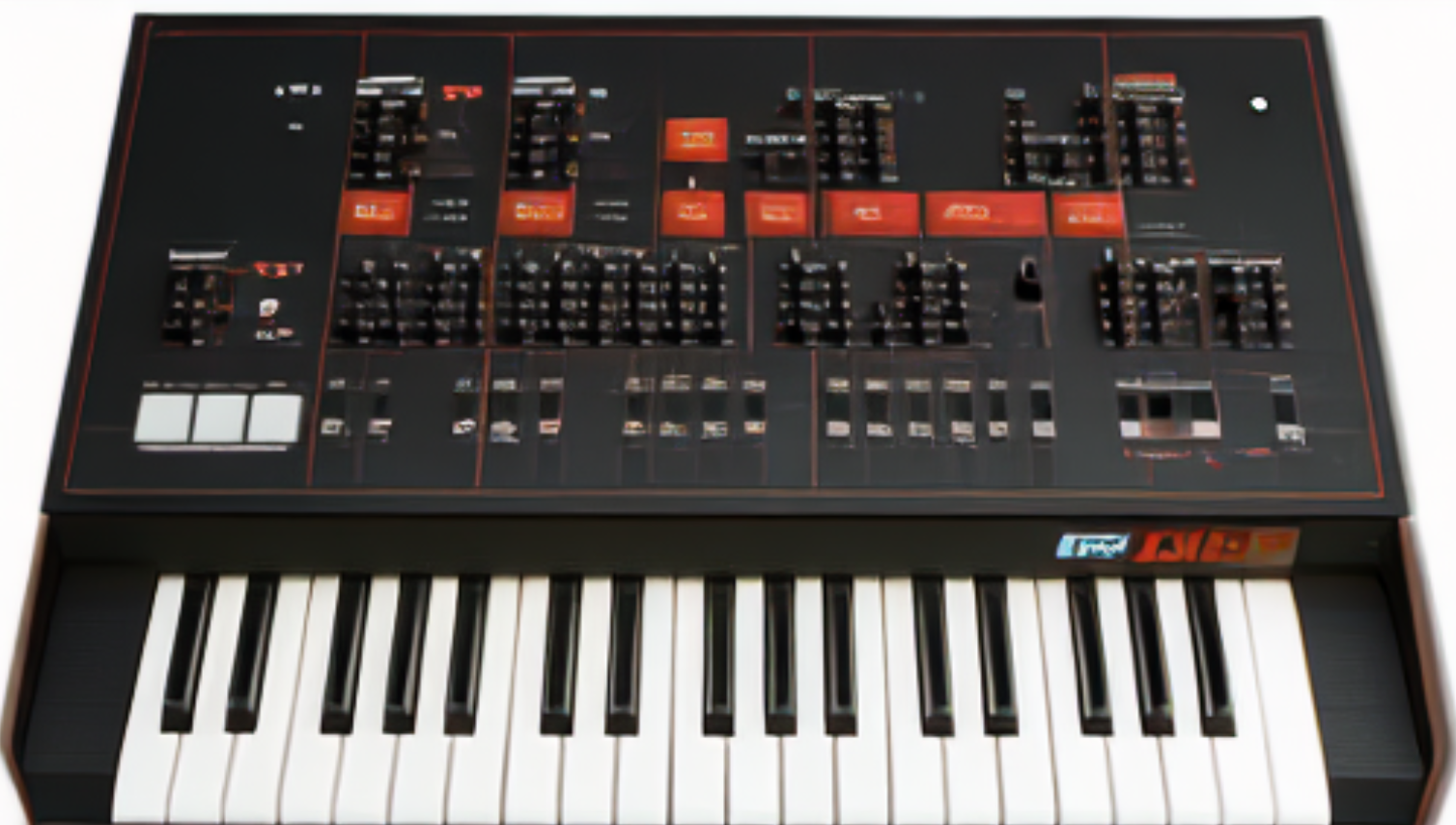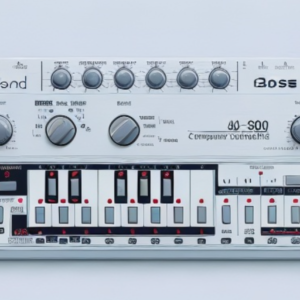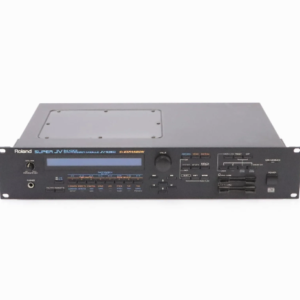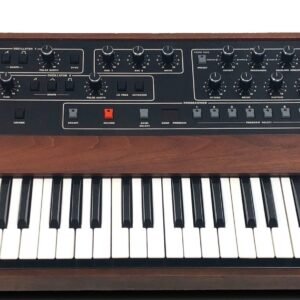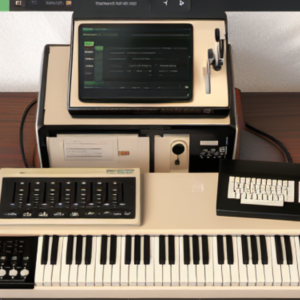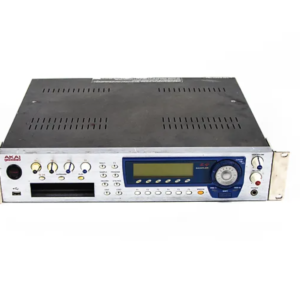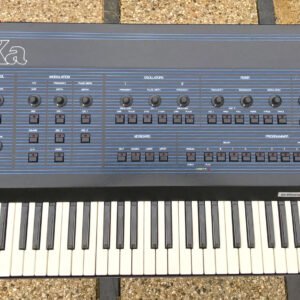Introduction
The ARP Odyssey stands as a quintessential icon in the world of synthesizers. Introduced in the early 1970s, this analog synthesizer was designed by Alan R. Pearlman, founder of ARP Instruments, Inc. With its distinctive sound and versatile capabilities, the ARP Odyssey quickly gained popularity among musicians, becoming a staple in both studio recordings and live performances.
This groundbreaking synthesizer marked a significant milestone in the evolution of electronic music instruments. Its compact size, compared to the bulky modular synthesizers of the time, made it accessible to a broader range of musicians. The ARP Odyssey’s intuitive interface and innovative features allowed users to explore a vast sonic palette, from rich, warm tones to cutting-edge, futuristic sounds.
From rock bands to electronic music pioneers, the ARP Odyssey found its way into the hands of countless musicians, shaping the sound of an era. Its distinctively bold design, featuring colorful sliders and switches, became synonymous with the analog synth aesthetic of the 1970s.
As technology advanced, the ARP Odyssey underwent several iterations and reissues, each retaining the essence of the original while incorporating modern enhancements. Despite the passage of time, its legacy endures, with vintage units coveted by collectors and modern reproductions cherished by contemporary artists.
In this article, we delve into the design, features, and impact of the ARP Odyssey, exploring its role in shaping the landscape of electronic music and its enduring influence on generations of musicians.
Design and Features
The ARP Odyssey’s design is as distinctive as its sound. Encased in a sleek and compact chassis, the synthesizer exudes a sense of retro-futurism that remains timeless. Let’s explore the design elements and standout features that define the ARP Odyssey:
1. **Compact Form Factor**: Unlike the large, cumbersome modular synthesizers of its time, the ARP Odyssey was remarkably compact and portable. Its streamlined design made it well-suited for both studio use and live performances, appealing to musicians seeking versatility and mobility.
2. **Colorful Interface**: One of the most visually striking aspects of the ARP Odyssey is its colorful interface. Featuring an array of sliders, knobs, and switches in vibrant hues, the synthesizer invites exploration and experimentation. Each control element is thoughtfully laid out, providing intuitive access to a wealth of sonic possibilities.
3. **Dual VCOs (Voltage-Controlled Oscillators)**: At the heart of the ARP Odyssey are its dual VCOs, which generate the raw audio signals that form the basis of its sound. These oscillators offer a wide range of waveforms, including sawtooth, square, and pulse, allowing users to sculpt rich and complex tones with precision.
4. **Flexible Filter Section**: The ARP Odyssey’s filter section is renowned for its versatility and expressiveness. Equipped with a resonant low-pass filter, users can sculpt the timbre of their sounds with ease, from smooth and mellow to aggressive and biting. The filter’s cutoff frequency and resonance parameters can be modulated dynamically, adding depth and movement to the sound.
5. **Envelopes and Modulation**: Comprehensive envelope generators and modulation options further enhance the ARP Odyssey’s sonic capabilities. With ADSR (Attack, Decay, Sustain, Release) envelopes for both the amplitude and filter sections, users can shape the contour of their sounds in intricate detail. Additionally, the synthesizer offers various modulation sources and destinations, allowing for expressive control over parameters such as pitch, filter cutoff, and oscillator frequency.
6. **Patch Points and Connectivity**: For advanced users and modular enthusiasts, the ARP Odyssey features patch points that enable extensive signal routing and modulation possibilities. These patch points allow for interconnectivity with external modular gear, expanding the synthesizer’s sonic potential even further. In terms of connectivity, the ARP Odyssey typically offers standard audio and MIDI connections, ensuring seamless integration with modern studio setups.
7. **Performance Controls**: Designed with live performance in mind, the ARP Odyssey includes dedicated performance controls such as portamento, pitch bend, and modulation wheels. These controls enable expressive playing techniques, allowing musicians to infuse their performances with dynamics and nuance.
Overall, the design and features of the ARP Odyssey embody a perfect balance of functionality, innovation, and aesthetics. From its iconic appearance to its versatile sound-shaping capabilities, the synthesizer continues to captivate musicians and enthusiasts alike, standing as a timeless testament to the golden age of analog synthesis.
Sound Generation
The ARP Odyssey’s sound generation capabilities are at the core of its legendary status in the world of synthesizers. Built upon analog circuitry, the synthesizer produces rich, organic tones characterized by warmth, depth, and character. Let’s delve into the key components of the ARP Odyssey’s sound generation:
1. **Voltage-Controlled Oscillators (VCOs)**: Central to the ARP Odyssey’s sound are its dual voltage-controlled oscillators. These oscillators generate the primary waveforms that form the basis of the synthesizer’s sound palette. Users can select from various waveform options, including sawtooth, square, and pulse waves, each offering distinct tonal characteristics. By adjusting parameters such as frequency and waveform shape, users can sculpt a wide range of sounds, from classic analog leads and basses to experimental textures and effects.
2. **Subtractive Synthesis Architecture**: The ARP Odyssey follows a subtractive synthesis approach, where sound is generated by filtering harmonically-rich waveforms to shape their timbre. The synthesizer’s flexible filter section, comprising a resonant low-pass filter, allows users to sculpt the harmonic content of their sounds with precision. By adjusting parameters such as cutoff frequency and resonance, users can achieve a vast array of sonic textures, from smooth and creamy to aggressive and edgy.
3. **Modulation and Envelopes**: Modulation plays a crucial role in shaping the evolving nature of sounds produced by the ARP Odyssey. The synthesizer features comprehensive modulation capabilities, allowing users to dynamically modulate parameters such as pitch, filter cutoff, and oscillator frequency. Envelope generators, including ADSR (Attack, Decay, Sustain, Release) envelopes for both the amplitude and filter sections, provide precise control over the evolution of sound over time. By modulating these envelopes and other parameters, users can create expressive and evolving soundscapes that respond to the nuances of their performance.
4. **Unison and Polyphony**: While early iterations of the ARP Odyssey were monophonic, later models introduced features such as duophonic capability, allowing users to play two notes simultaneously. This expanded polyphony provided greater versatility and richness to the synthesizer’s sound, enabling more complex and layered compositions.
5. **Analog Character and Warmth**: One of the defining characteristics of the ARP Odyssey’s sound is its unmistakable analog warmth and character. Unlike digital synthesizers, which rely on digital signal processing algorithms, the ARP Odyssey’s analog circuitry imparts a unique sonic character characterized by rich harmonics, subtle imperfections, and a sense of organic warmth. This analog sound quality remains highly sought after by musicians and producers seeking to infuse their music with vintage charm and authenticity.
Overall, the sound generation capabilities of the ARP Odyssey are a testament to the enduring appeal of analog synthesis. From its lush pads and soaring leads to its gritty basses and evolving textures, the synthesizer continues to inspire musicians across genres, cementing its status as a timeless classic in the world of electronic music.
Notable Users and Influences
The ARP Odyssey has left an indelible mark on the landscape of electronic music, influencing generations of musicians and shaping the sonic palette of countless recordings. From pioneering artists who embraced the synthesizer’s innovative capabilities to contemporary performers who continue to draw inspiration from its timeless sound, the ARP Odyssey has garnered a devoted following among musicians worldwide. Let’s explore some of the notable users and the profound influence they’ve had on the evolution of electronic music:
1. **Herbie Hancock**: Renowned jazz pianist and composer Herbie Hancock was an early adopter of the ARP Odyssey, incorporating its distinctive sound into his groundbreaking albums of the 1970s. Tracks like “Chameleon” from the album “Head Hunters” prominently feature the ARP Odyssey’s funky bass lines and otherworldly textures, showcasing its versatility and expressive potential.
2. **Kraftwerk**: The pioneering electronic band Kraftwerk embraced the ARP Odyssey as part of their arsenal of synthesizers, using it to create the iconic sounds heard on albums such as “Autobahn” and “Trans-Europe Express.” The ARP Odyssey’s futuristic tones played a crucial role in defining Kraftwerk’s innovative approach to electronic music, laying the foundation for the genre known as “electronic krautrock.”
3. **Tangerine Dream**: German electronic music pioneers Tangerine Dream were early proponents of the ARP Odyssey, harnessing its powerful sound generation capabilities to craft immersive and otherworldly soundscapes. Albums like “Phaedra” and “Rubycon” feature the ARP Odyssey’s ethereal textures and pulsating sequences, showcasing its ability to evoke a sense of cosmic exploration and sonic transcendence.
4. **Gary Numan**: British musician Gary Numan embraced the ARP Odyssey as part of his signature sound, using it to create the futuristic synth-pop anthems that defined the New Wave era. Tracks like “Cars” and “Are ‘Friends’ Electric?” feature the ARP Odyssey’s distinctive bass lines and soaring lead melodies, contributing to Numan’s status as a pioneer of electronic music.
5. **Jean-Michel Jarre**: Electronic music visionary Jean-Michel Jarre utilized the ARP Odyssey’s expressive capabilities to craft epic and cinematic soundscapes that pushed the boundaries of electronic music. Albums like “Oxygène” and “Équinoxe” feature the ARP Odyssey’s sweeping pads, pulsating sequences, and haunting melodies, showcasing its versatility and emotive potential.
6. **Vangelis**: Greek composer Vangelis is renowned for his atmospheric and evocative film scores, many of which feature the ARP Odyssey prominently. From the haunting melodies of “Blade Runner” to the majestic themes of “Chariots of Fire,” Vangelis’ use of the ARP Odyssey helped define the sound of sci-fi and fantasy cinema, earning him critical acclaim and widespread recognition.
7. **Contemporary Artists**: In addition to its influence on pioneering artists of the past, the ARP Odyssey continues to inspire contemporary musicians across genres. From electronic producers seeking to capture the retro-futuristic charm of analog synthesis to experimental artists pushing the boundaries of sonic exploration, the ARP Odyssey remains a source of inspiration and creativity in the ever-evolving landscape of electronic music.
Overall, the ARP Odyssey’s legacy is not only defined by its innovative design and versatile sound generation capabilities but also by the profound influence it has had on the evolution of electronic music. From its early days as a pioneering instrument of the 1970s to its continued relevance in the digital age, the ARP Odyssey stands as a testament to the enduring power of innovation and creativity in music.
Technical Specifications
The technical specifications of the ARP Odyssey provide a detailed overview of its capabilities and performance parameters. Here, we outline key specifications to offer a comprehensive understanding of this iconic synthesizer:
1. **Synthesis Type**: Analog subtractive synthesis
2. **Keyboard**: 37-note (three-octave) keyboard with velocity sensitivity (on select models) and aftertouch
3. **Voltage-Controlled Oscillators (VCOs)**:
– Dual VCO design
– Waveforms: Sawtooth, square, and pulse waves
– Frequency range: Typically from 20 Hz to 20 kHz
– Octave range: Selectable across multiple octaves
4. **Filter Section**:
– Voltage-Controlled Filter (VCF)
– Filter types: Low-pass with resonance (high-pass and band-pass available on select models)
– Cutoff frequency range: Typically from 10 Hz to 20 kHz
– Resonance control: Variable resonance amount
5. **Envelope Generators**:
– ADSR (Attack, Decay, Sustain, Release) envelope generators for amplitude and filter sections
– Envelope controls: Adjustable attack, decay, sustain, and release times
6. **Modulation**:
– Modulation sources: LFO (Low-Frequency Oscillator) with variable waveform shapes (sine, square, triangle, sawtooth)
– Modulation destinations: Pitch, filter cutoff frequency, oscillator frequency, and more
7. **Performance Controls**:
– Portamento (glide) control for smooth transitions between notes
– Pitch bend wheel for expressive pitch modulation
– Modulation wheel for real-time control over modulation depth
8. **Patch Points**:
– Available on certain models for modular connectivity
– Enable extensive signal routing and modulation possibilities with external modular gear
9. **Polyphony**:
– Typically monophonic operation, though duophonic capabilities introduced in later models
10. **Connectivity**:
– Audio output: 1/4″ TS jack
– Control input/output: CV/Gate connections for interfacing with external sequencers and controllers
– MIDI: Some later models feature MIDI connectivity for integration with modern studio setups
11. **Power**:
– Input voltage: Typically 110-120V AC or 220-240V AC, depending on region
– Power consumption: Varies by model, typically around 15-20 watts
12. **Dimensions and Weight**:
– Dimensions: Varies by model, typically around 55.9 cm (22″) width, 34.3 cm (13.5″) depth, and 13.3 cm (5.25″) height
– Weight: Varies by model, typically around 9-10 kg (20-22 lbs)
These technical specifications offer a comprehensive overview of the ARP Odyssey’s capabilities, providing insight into its design, performance, and connectivity options. With its rich analog sound and versatile synthesis engine, the ARP Odyssey continues to captivate musicians and enthusiasts, earning its place as a timeless classic in the world of synthesizers.
Performance and Workflow
The performance and workflow aspects of the ARP Odyssey contribute significantly to its appeal and usability, making it a versatile instrument suitable for both studio production and live performance settings. Let’s explore the key features and considerations related to performance and workflow with the ARP Odyssey:
1. **Intuitive Interface**: The ARP Odyssey’s front panel layout is designed for intuitive operation, with clearly labeled controls and a logical signal flow. Musicians can quickly access essential parameters such as oscillator frequency, filter cutoff, and envelope settings, allowing for efficient sound design and experimentation.
2. **Real-Time Control**: With dedicated performance controls such as portamento, pitch bend, and modulation wheels, the ARP Odyssey offers expressive control over sound shaping and modulation. Musicians can add nuances to their performances, from subtle pitch bends to dynamic filter sweeps, enhancing the expressiveness and musicality of their playing.
3. **Velocity Sensitivity and Aftertouch**: Select models of the ARP Odyssey feature velocity-sensitive keys and aftertouch capabilities, adding an extra dimension of expressiveness to performances. Velocity sensitivity allows for dynamic variations in note volume and timbre, while aftertouch enables further modulation control based on key pressure, opening up creative possibilities for performers.
4. **Sequencing and Arpeggiation**: While the ARP Odyssey itself does not include built-in sequencing or arpeggiation features, it can be integrated with external sequencers and controllers for more advanced performance techniques. Musicians can use external devices to sequence patterns, create complex arpeggios, and trigger rhythmic sequences, expanding the ARP Odyssey’s capabilities beyond its standalone operation.
5. **Patch Memory and Recall**: Early iterations of the ARP Odyssey did not include patch memory, requiring users to manually set parameters for each sound. However, later models introduced patch memory capabilities, allowing users to store and recall their favorite presets instantly. Patch memory enhances workflow efficiency, especially in studio settings where quick access to specific sounds is essential for productivity.
6. **Modular Connectivity**: With patch points for CV/Gate connections, the ARP Odyssey seamlessly integrates with modular synthesizer systems, offering limitless possibilities for signal routing and modulation. Musicians can explore modular synthesis techniques, patching together different modules to create unique sonic textures and experimental sounds.
7. **Durability and Reliability**: Built to withstand the rigors of live performance and studio use, the ARP Odyssey boasts a robust construction and reliable components. Its durable chassis and high-quality materials ensure longevity, making it a dependable instrument for professional musicians and enthusiasts alike.
8. **User Community and Support**: Over the years, the ARP Odyssey has fostered a vibrant user community of musicians, synthesizer enthusiasts, and collectors. Online forums, social media groups, and dedicated websites provide valuable resources, tips, and support for users seeking to explore the full potential of the instrument.
Overall, the performance and workflow features of the ARP Odyssey contribute to its reputation as a versatile and inspiring instrument for musicians across genres. Whether used in the studio for sound design and production or on stage for expressive live performances, the ARP Odyssey continues to captivate performers with its intuitive operation, expressive capabilities, and timeless analog sound.
Impact and Legacy
The impact of the ARP Odyssey on the world of electronic music is profound and enduring, leaving an indelible mark on the evolution of synthesizers and shaping the sonic landscape for generations to come. Let’s delve into the far-reaching influence and lasting legacy of this iconic instrument:
1. **Pioneering Innovation**: Introduced in the early 1970s, the ARP Odyssey represented a paradigm shift in the world of synthesizers. Its compact size, intuitive interface, and versatile sound generation capabilities democratized access to analog synthesis, empowering musicians to explore new sonic territories and push the boundaries of creativity.
2. **Defining the Analog Sound**: The ARP Odyssey’s rich and distinctive analog sound became synonymous with the golden age of synthesizers, setting a benchmark for warmth, depth, and expressiveness. Its iconic oscillators, resonant filter, and lush modulation options contributed to the sonic palette of countless recordings, from progressive rock and jazz-fusion to electronic and experimental music.
3. **Influential Artists and Iconic Recordings**: The ARP Odyssey found favor among pioneering artists who embraced its innovative capabilities and integrated its unique sounds into their music. From jazz-fusion legends like Herbie Hancock to electronic music pioneers like Kraftwerk and Tangerine Dream, the ARP Odyssey left an indelible mark on seminal recordings of the 1970s and beyond. Tracks featuring the ARP Odyssey became emblematic of an era defined by sonic exploration and technological innovation.
4. **Shaping Musical Genres**: The ARP Odyssey played a pivotal role in shaping various musical genres, from synth-pop and new wave to ambient and electronic dance music. Its versatile sound and expressive capabilities enabled musicians to create immersive soundscapes, infectious rhythms, and evocative melodies that defined the sonic landscape of the late 20th century and beyond.
5. **Enduring Influence on Synthesis**: Despite advancements in digital technology, the analog warmth and character of the ARP Odyssey continue to captivate musicians and producers. Its timeless sound remains highly sought after in an era marked by a resurgence of interest in vintage analog synthesizers and hardware. Modern reproductions and software emulations pay homage to the ARP Odyssey’s legacy, ensuring its continued relevance in contemporary music production.
6. **Cultural Icon and Symbol of Innovation**: Beyond its musical impact, the ARP Odyssey holds cultural significance as a symbol of innovation and artistic expression. Its sleek design, colorful interface, and futuristic sound embody the spirit of creativity and exploration that defines electronic music culture. As a cultural icon, the ARP Odyssey continues to inspire a new generation of musicians, producers, and synthesizer enthusiasts, ensuring its legacy lives on for years to come.
In summary, the ARP Odyssey’s impact and legacy extend far beyond its status as a pioneering synthesizer. It represents a chapter in the history of electronic music defined by innovation, creativity, and sonic experimentation. As a timeless classic, the ARP Odyssey continues to inspire and influence musicians, shaping the ever-evolving landscape of music production and performance.
Collector's Value and Market Trends
The ARP Odyssey holds a special place in the hearts of synthesizer enthusiasts and collectors alike, garnering significant interest and appreciation in the vintage synthesizer market. Let’s explore the collector’s value and market trends associated with the ARP Odyssey:
1. **Vintage Rarity and Historical Significance**: As one of the pioneering analog synthesizers of the 1970s, the ARP Odyssey holds historical significance as an emblem of innovation and creativity in electronic music. Vintage units from the original production runs are highly sought after by collectors due to their rarity, craftsmanship, and contribution to the evolution of synthesizer technology.
2. **Iconic Design and Aesthetic Appeal**: The ARP Odyssey’s distinctive design, featuring colorful sliders, switches, and a sleek chassis, adds to its collector’s appeal. Vintage units in good cosmetic condition, with intact control panels and original components, command higher prices in the collector’s market, reflecting the instrument’s iconic aesthetic appeal and cultural significance.
3. **Demand for Specific Models and Revisions**: Within the ARP Odyssey lineup, certain models and revisions are more coveted by collectors due to their unique features, sound characteristics, and historical importance. For example, early iterations of the ARP Odyssey, such as the Mark I and Mark II models, are prized for their vintage sound and analog authenticity. Limited editions, signature models, and rare color variations also attract collectors seeking exclusivity and rarity.
4. **Market Prices and Appreciation**: The collector’s value of the ARP Odyssey has experienced steady appreciation over the years, driven by increasing demand from musicians, producers, and synthesizer enthusiasts. Prices for vintage units vary depending on factors such as condition, rarity, and provenance, with pristine examples commanding premium prices in the collector’s market. As interest in vintage synthesizers continues to grow, the ARP Odyssey’s collector’s value is expected to appreciate further over time.
5. **Restoration and Maintenance**: Collectors and enthusiasts often invest in the restoration and maintenance of vintage ARP Odyssey synthesizers to preserve their originality and functionality. Professional restoration services, including component replacement, calibration, and cosmetic refurbishment, help maintain the instrument’s value and usability for future generations of musicians and collectors.
6. **Modern Reproductions and Reissues**: In addition to vintage units, modern reproductions and reissues of the ARP Odyssey cater to collectors and musicians seeking the analog sound and aesthetic of the original synthesizer. These reissues, produced by reputable manufacturers with attention to detail and authenticity, offer an alternative for those unable to acquire or maintain vintage units, further fueling interest in the ARP Odyssey’s collector’s value and market trends.
In summary, the ARP Odyssey’s collector’s value and market trends reflect its status as a timeless classic in the world of synthesizers. With its iconic design, historical significance, and legendary sound, the ARP Odyssey continues to captivate collectors and enthusiasts, ensuring its place as a highly coveted and cherished instrument in the vintage synthesizer market.
Innovations and Contributions
The ARP Odyssey stands as a groundbreaking instrument that introduced several innovations to the world of synthesizers, leaving a lasting impact on the evolution of electronic music. Let’s explore some of the key innovations and contributions associated with the ARP Odyssey:
1. **Compact and Portable Design**: At a time when modular synthesizers dominated the market, the ARP Odyssey broke new ground with its compact and portable design. Its streamlined chassis made it more accessible to musicians, allowing for easy transport and integration into studio setups and live performances. This innovation democratized access to analog synthesis, paving the way for a new era of electronic music exploration.
2. **Dual Voltage-Controlled Oscillators (VCOs)**: The ARP Odyssey introduced the concept of dual VCOs, allowing users to generate complex waveforms and harmonically rich tones. This dual oscillator design provided greater versatility and flexibility in sound creation, enabling musicians to craft a wide range of sounds, from lush pads and soaring leads to punchy basses and percussive effects.
3. **Flexible Filter Section**: The ARP Odyssey’s resonant low-pass filter revolutionized sound shaping capabilities, offering musicians precise control over the timbre and character of their sounds. With adjustable cutoff frequency and resonance parameters, users could sculpt sounds ranging from smooth and mellow to aggressive and biting, opening up new creative possibilities for sonic exploration.
4. **Comprehensive Modulation Options**: The ARP Odyssey introduced comprehensive modulation options, including envelope generators, LFOs (Low-Frequency Oscillators), and modulation routings. This allowed for dynamic control over parameters such as pitch, filter cutoff, and oscillator frequency, enabling expressive and evolving soundscapes that responded to the nuances of performance.
5. **Integration of Performance Controls**: Dedicated performance controls such as portamento, pitch bend, and modulation wheels enhanced the expressiveness and playability of the ARP Odyssey. Musicians could infuse their performances with dynamics and nuance, adding a human touch to their synthesized sounds and enhancing the overall musicality of their compositions.
6. **Patch Points for Modular Connectivity**: The inclusion of patch points on certain models of the ARP Odyssey enabled modular connectivity, allowing for extensive signal routing and modulation possibilities with external modular synthesizer systems. This innovation opened up new avenues for experimentation and collaboration, fostering a vibrant community of modular synthesizer enthusiasts and expanding the sonic capabilities of the ARP Odyssey beyond its standalone operation.
7. **Legacy of Innovation and Inspiration**: Beyond its technical innovations, the ARP Odyssey’s enduring legacy lies in its role as a source of inspiration and creativity for generations of musicians and synthesizer enthusiasts. Its timeless sound and iconic design continue to captivate artists across genres, influencing the evolution of electronic music and shaping the sonic landscape for decades to come.
In summary, the ARP Odyssey’s innovations and contributions have left an indelible mark on the world of synthesizers and electronic music. From its compact and portable design to its versatile sound generation capabilities and expressive performance controls, the ARP Odyssey remains a testament to the power of innovation and creativity in shaping the future of music technology.
